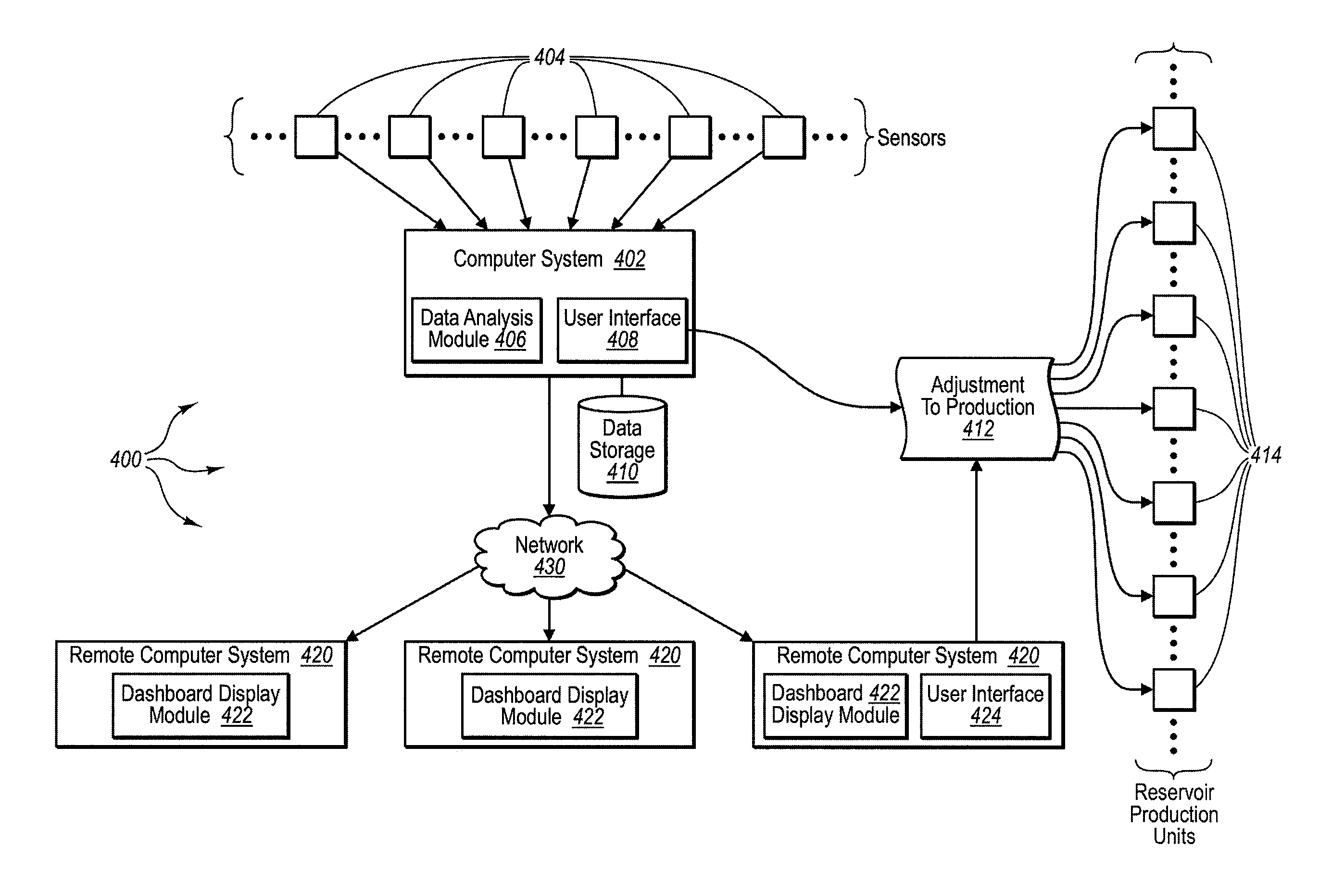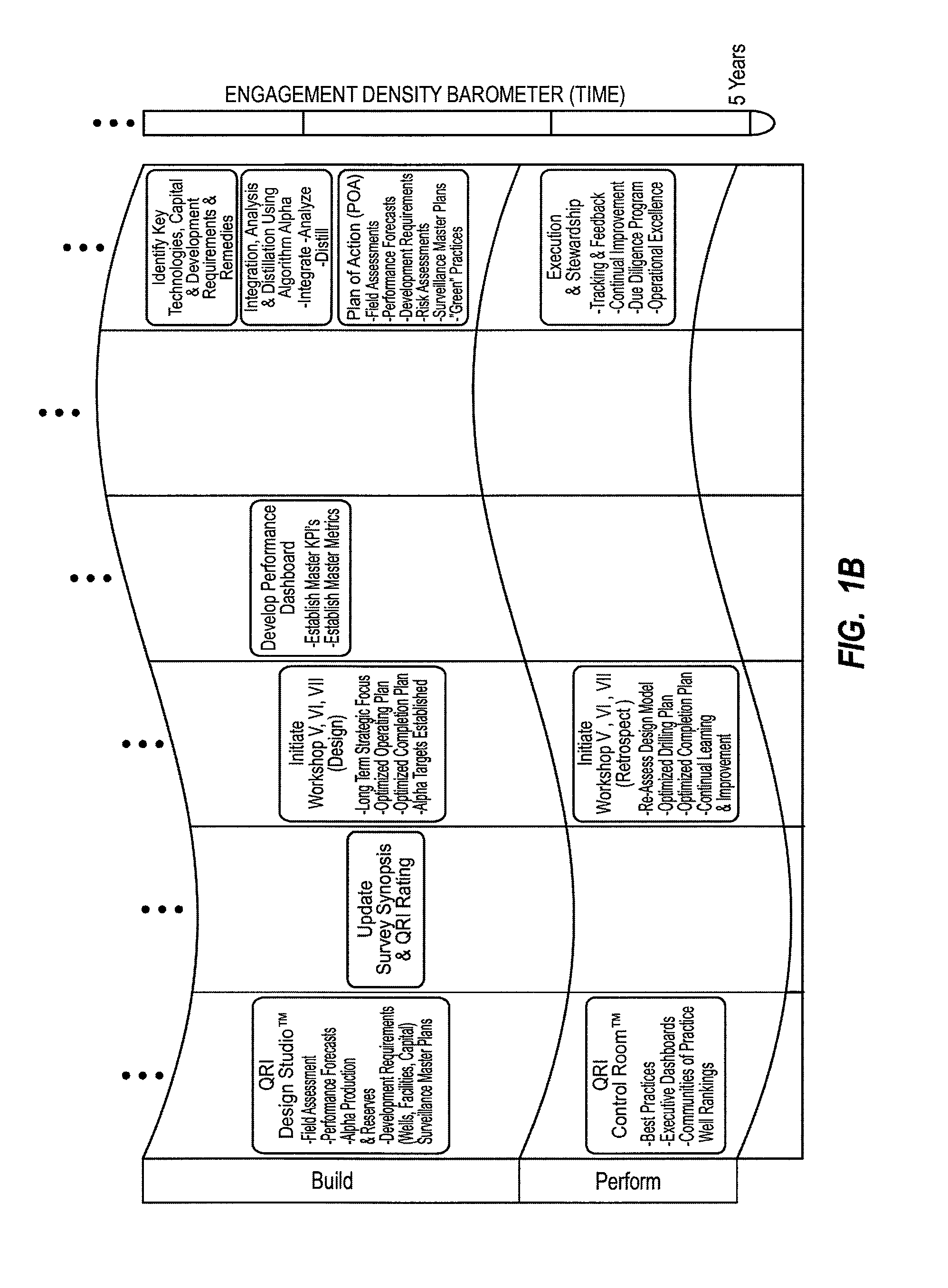Method for dynamically assessing petroleum reservoir competency and increasing production and recovery through asymmetric analysis of performance metrics
a technology of performance metrics and performance indicators, applied in the field of petroleum reservoir design, management and response, can solve the problems that conventional methods do not provide useful tools for properly understanding, and achieve the effects of increasing short-term production rates, short-term recovery, and reducing production and recovery
- Summary
- Abstract
- Description
- Claims
- Application Information
AI Technical Summary
Benefits of technology
Problems solved by technology
Method used
Image
Examples
example 1
[0651]The field in this example has been on production under a peripheral waterflood. It is in a mature state of depletion with more than 70% of its reserves already produced. Re-engineering efforts were initiated to reduce field decline rates and water-cuts. A secondary objective was to lower ESP requirements and associated capital programs.
Geology
[0652]The field produces from a 60+ meters thick carbonate reservoir which is comprised of numerous shoaling-upwards cycles. The reservoir has an average porosity of more than 15% and permeability up to several darcies. The upper half of the reservoir is generally very high reservoir quality; the lower half contains numerous interbeds of high and low reservoir quality. The lower half reservoir quality is enhanced by the addition of fracture permeability which significantly increases reservoir conductivity while also increasing risks of premature water breakthrough. The reservoir has more than 300 meters of structural...
example 2
[0655]The field in this example went on-stream in 2006 with a production rate of 300,000 Bbls / day and was the third increment of a three-increment field development plan. It is under a peripheral waterflood. Re-engineering efforts in designing the new production increment were initiated due to concern about premature water breakthrough, excessive development costs and high well decline rates, all due to complex geology. These concerns were based on experience gained through the development and performance of two adjacent oil-containing increments.
Geology
[0656]The field produces from a 60 meter thick carbonate reservoir which is comprised of numerous shoaling-upwards cycles. The reservoir has an average porosity of about 15% and permeability up to 100 millidarcies. The upper half of the reservoir is generally moderate reservoir quality; the lower half contains numerous interbeds of moderate and low reservoir quality. The reservoir quality is enhanced by the addi...
example 3
[0659]The field in this example came on production in 1998 at a production rate of 500,000 Bbls / day. It was developed exclusively by 1-kilometer long horizontal wells. Current plans call for increasing production to 750,000 Bbls / day by 2010. Re-engineering efforts were initiated to reduce well productivity declines, gas oil ratio (GOR), and associated field development capital and operational costs.
Geology
[0660]The field is characterized as a gently folded northeast / southwest-trending anticline consisting primarily of Cretaceous age sandstones, shales, and carbonates. The reservoir consists of rudist buildups that vary laterally into barrier and shelf slope facies. While matrix porosity is generally high (with an average of 25%) and does not vary laterally, permeability is facies-dependent and exhibits spatial variability. In the south which is dominated by low-energy lagoon deposits, typical permeabilities range from 5 to 10 millidarcies. 3D seismic data show ...
PUM
 Login to View More
Login to View More Abstract
Description
Claims
Application Information
 Login to View More
Login to View More - R&D
- Intellectual Property
- Life Sciences
- Materials
- Tech Scout
- Unparalleled Data Quality
- Higher Quality Content
- 60% Fewer Hallucinations
Browse by: Latest US Patents, China's latest patents, Technical Efficacy Thesaurus, Application Domain, Technology Topic, Popular Technical Reports.
© 2025 PatSnap. All rights reserved.Legal|Privacy policy|Modern Slavery Act Transparency Statement|Sitemap|About US| Contact US: help@patsnap.com



